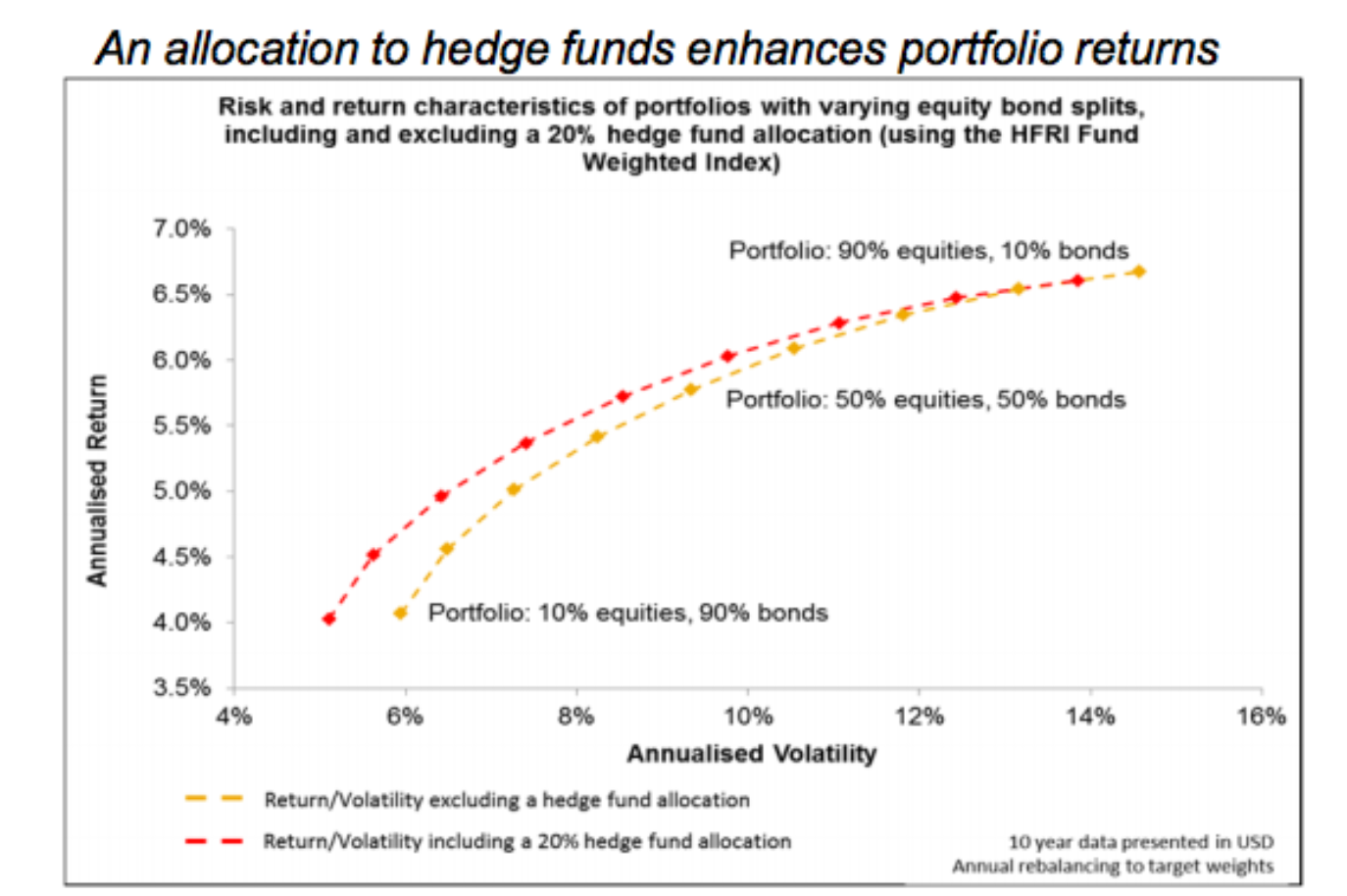Despite hedge funds’ disappointing performance since the financial crisis, investors should keep them in their portfolios—but only if they can invest better.
According to Aon Hewitt, some of the temporary and cyclical drags on hedge funds, such as artificially dampened volatility, are expected to lift.
Asset classes that have been highly correlated since 2008, largely due to central banks’ monetary policies, are likely to move more independently, the consulting firm said.
“This makes us more optimistic that hedge fund returns may not prove quite the disappointment they have been over the last few years,” the report said.
Furthermore, Aon Hewitt argued hedge fund returns will look especially attractive as traditional asset classes move into a mediocre- to low-return environment with an expected rise in volatility.
These conditions are likely to push hedge funds to provide steadier returns in challenging markets and “cushion portfolios against a rising risk that equities and bonds will disappoint,” the consultant firm said.
According to the company, even with the asset class’ poor returns over the last seven years, portfolios with hedge funds generally did better in terms of risk-return than any combination of equities and bonds over the last decade.
But simply including hedge funds in the portfolio is not enough. Investors need to do better, Aon Hewitt said, as the average hedge funds “will not deliver the portfolio enhancement that we are looking for.”
Due to a wide range of returns even for funds seeming to use the same strategy, investors need to be able to pick the most skilled managers and the right funds to make hedge funds “worth it,” the firm said.
In the expected low-return environment, Aon Hewitt recommended macro strategies, particularly discretionary and systematic strategies that are not driven by wider market movements.
 Source: DataStream and Aon, data as of June 2015
Source: DataStream and Aon, data as of June 2015
Related: Hedge Fund Product Wave Set for 2016& Time for Hedge Funds 2.0, Says Report
